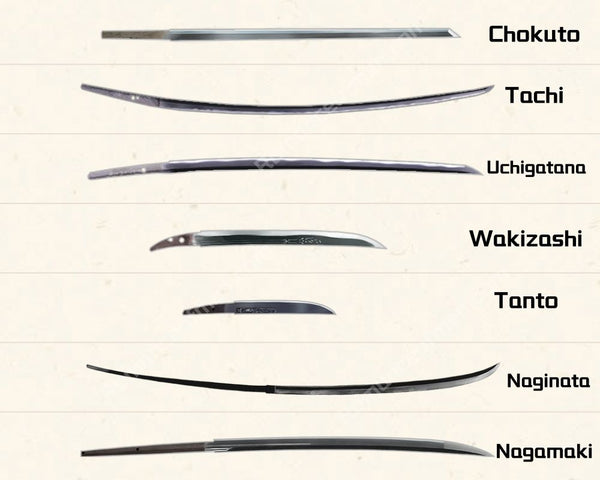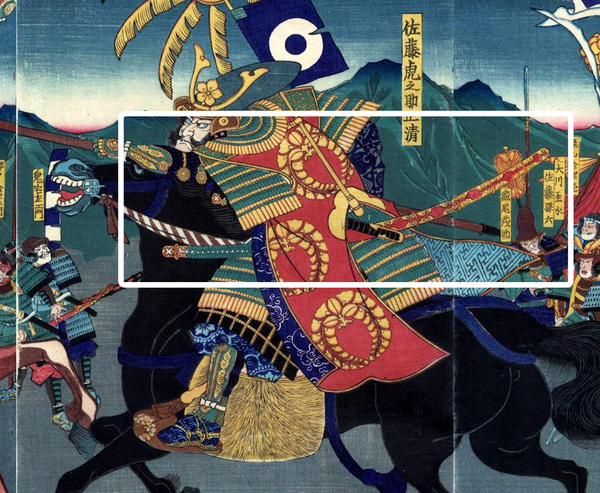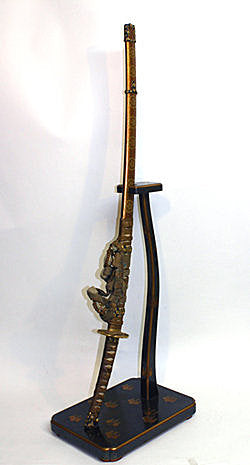Katana blade up or down? Why is katana wear and display with edge upward
If you have recently become interested in the world of katanas, something strange can make you really confused, Why in some movies or anime, we can see samurai wearing their swords with the blade facing up, and sometimes wearing it with edge facing down? What is the proper way to wear a katana? And what are the reasons / etiquettes behind? With many questions in mind, we will introduce the historical, cultural, and functional reasons behind this unique katana wearing practice.
Table of Content
- Katana blade, up or down?
- Why Tachi should be wear with edge downward
- Why Uchigatana should be wear edge upward
- How to display Katana correctly
Katana blade, up or down?
The short answer is, for Katana, or to be more accurate, the Uchigatana, should be wear with edge upward. And for another type of Katana, Tachi should be wear with edge downward.
First of all, let’s get our katana terminology sorted, When people casually throw around the term "katana," they're generally talking about the iconic samurai sword, but most of time we are actually talking about Uchigatana 打刀. There's a common mix-up between these two terms. Katana means “one sided blade”, it’s a more general term for Japanese swords. Uchigatana means “striking sword” 打刀, it’s the katana we know, from the relentless zombies sliced by Michonne in The Walking Dead to the epic sword battles in Kill Bill and the supernatural demon-fighting action in Demon Slayer, the swords they used are Uchigatana.

For Uchigatana, the correct way to wear it and display it, is with the edge facing upward.
But not all katana / Ninonto, there are other types of katana, like nodachi, tachi, wakizashi, tanto etc, among them, tachi, Nodachi should be wear and display with edge facing downward. This might seem very confuse to you, but we will break down the reason so you will have better clue.
Why Tachi should be wear with edge downward:

Tachi 太刀 / Nodachi were mainly used in Heian Period, when the war was mostly on horseback. As you can see from the length and curve of Tachi / Nodachi is like a long saber. When a full armed samurai on a horse, tachi was hanged from the waist securely. When making attacks, he needs use one hand to control the horse, and the other hand to draw the sword. Because the edge was facing downward, after you draw it out the edge is still facing downward, it’s a 2 motion chopping strike, it is kinda slower but it provides maximum power on the horseback.
Samurais in battle always wear full samurai armor (Oyoroi), and the shoulder armor (Sode) isn’t light, if the sword edge is facing upward, that means the drawing movements needs to raise your arm higher, giving more pressure to the shoulder weight. Sword sheathed with edge facing downward can make this movement more easy.
Another reason of wearing tachi edge downward is prevent the tip of katana (kissaki) stab the horse. Based on how the samurai hangs tachi on the waist, this seems like a good reason.
Why Uchigatana should be wear edge upward:

After Heian Period, on foot battles became mainstream. The once advantages of tachi now become disadvantage without the horse. Samurai don’t always wear samurai armor in battle now, oftentimes they are in Kimono, how to draw your katana out of saya quickly become more important especially in close combat. This is the time katana become shorter, and less curved.
Uchigatana is fit inside the Obi (belt), often with wakizashi or tanto. Because the edge facing upward, when drawing the katana out, it’s a single motion movement, with a little twist of wrist, you can attack the enemy from various angle seamlessly. Unlike the two motion tachi drawing, many times you can only cut (or chop) from the top town, it’s powerful, but not quick enough for the modern days battle.
Same rule applied to Wakizashi, when wearing a Wakizashi, the edge should be face upward. Because wakizashi was also wear inside the obi, together with Uchigatana, it's called Daisho (大小二本差).
Wearing the katana with edge upward prevent the edge from constantly against the saya, it does help protect the edge, but this is not the main reason. Katana requires maintenance, but it is not that delicate.
But in some very rare cases, Uchigatana was drawn with edge facing downward, for example the famous manga Rurouni Kenshin, Kenshin uses his customized katana which the share edge was on the spine, making it a total harmless weapon, his fastest drawing technique was edge facing downward.
How to display Katana correctly
Now that we've learned the proper way to wear Uchigatana and Tachi, what about displaying them? Are there any particular guidelines we should be aware of? Of course there are, but the rule is simply, Katana Tsuka (handle) should be point to left, and the edge facing down for tachi, facing up for Uchigatana.

The reason behind it, is because the proper way to hold a katana, is to use your right hand to control it. Also sheathing and drawing a katana starts with your right hand as well. A well trained samurai can draw and strike in seconds if the katana is within his right hand’s reach.
That’s why katana should be displayed with handle in the left side, so even someone try to use it, it will take longer and cause inconvenience. This is the way to show the guest in the house that the katana is harmless.
Same rule when you enter someone’s house, you should take your katana out of the obi, and placed it on your right side, edge facing your body. Because katana was drawn out from your left side, when placing in your right side you can make quick drawing moves, well, unless you are left handed person.
Tachi can also be displayed vertically in a special katana stand, with Kissaki (tip of the katana) pointing up, and Tsuka (handle) touch the ground. While this isn’t a common way to display Tachi, it will certainly add a touch of uniqueness to your house.

Summary:
The uchigatana is worn edge-upward to facilitate the swift drawing and striking techniques associated, the tachi is worn edge-downward, reflecting its primary use in mounted combat. Same rules applied to the way of displaying them, adding one more detail is to point the handle to the left.
The world of Japanese swords is one of profound depth and nuance, where even the smallest details hold layers of meaning and history. By exploring the practical and aesthetic aspects of how these weapons are worn and displayed, we can gain a deeper understanding and appreciation for their enduring allure and the rich cultural heritage they embody.
*Image source:
touken-world.jp
Kyoto Samurai and Ninja Museum
Yoshitoshi's Triptychs





















